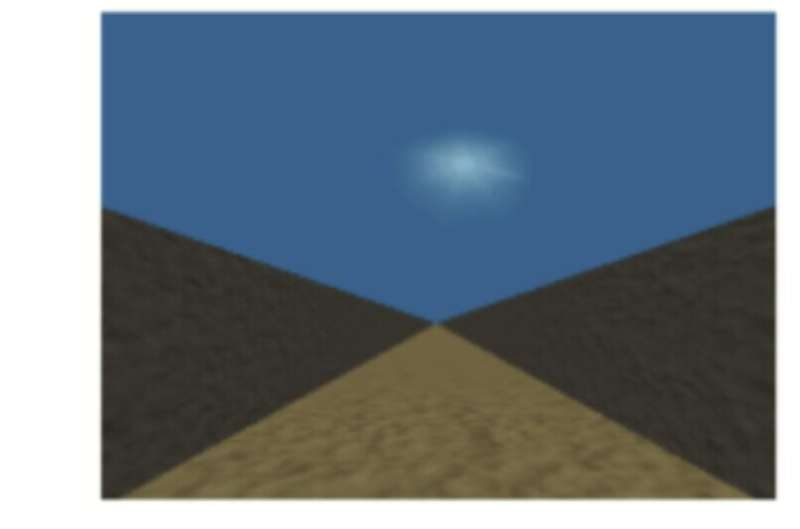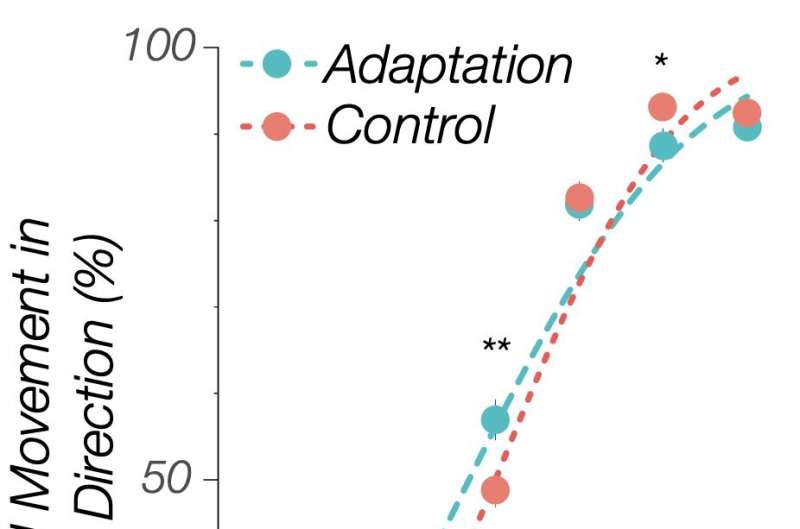May 13, 2024 feature
This article has been reviewed according to Science X's editorial process and policies. Editors have highlighted the following attributes while ensuring the content's credibility:
fact-checked
peer-reviewed publication
trusted source
proofread
Evidence of a travel direction signal that is independent from head direction in humans

We generally assume that when humans are walking or otherwise moving in space, their head faces towards the direction they are traveling in. Nonetheless, travel direction and head direction are distinct factors associated with the processing of different types of spatial information.
Researchers at University of California, Irvine and Boston University recently unveiled a travel direction-related signal represented in the human mind that appears to be independent from head direction. Their paper, published in the Journal of Experimental Psychology: General, could soon open new avenues for neuroscience and psychology research focusing on spatial navigation.
"We were interested in finding the first building blocks of navigation," Liz Chrastil, senior author of the paper, told Medical Xpress.
"Finding your way can be complicated, but in some ways keeping track of your position requires a few basic pieces of information—your speed, how long you have been going, what direction you are going in. We were also inspired by work in animals that found particular types of cells that track things like time or distance or head direction, and so we wanted to look at these types of fundamental pieces of information as well."
Head direction and travel direction have been found to provide very different information. Overall, travel direction plays a greater role than head direction in shaping the trajectory that humans or animals will follow while moving in their surrounding environment.
Moreover, studies found that people's heads are not always facing the direction they are going in. As part of their study, Chrastil and her colleagues carried out a behavioral experiment aimed at searching for a travel direction signal that is entirely separate from head direction.
"We were inspired by vision science, as one of our collaborators on this project works in vision and we wanted to see if we could use some of those methods," Chrastil explained.
"We used a method called adaptation. You might have seen adaptation when you stare at something green for a long time, then look at a white wall and it looks red. There are also motion adaptation effects (also called motion aftereffects) like staring at something moving downward, and then looking at something that is not moving it will look like it's moving upward."
In the context of this study, adaptations are essentially shifts in perception following the constant stimulation in a specific direction. In their behavioral experiment, Chrastil and her collaborators tried to produce a motion aftereffect related to the participants' perceived travel direction.

"Participants watched motion down a long hallway," Chrastil said. "There were two ends, one end with the sun and the other with the moon. The motion kept going in one direction, for example towards the sun, but to decouple the travel direction from head direction, sometimes the facing direction would flip around, so now it would seem like you were traveling backward (i.e., still toward the sun but now facing the moon)."
Throughout the team's experimental trials, the apparent direction in which participants were facing was flipped several times, all while they continued to move toward the sun. Chrastil compares the produced effect to the teacup ride at Disneyland, where one turns constantly even while moving in the same direction.
"We then performed a short test where the movement would go back and forth between the sun and the moon," she explained. "At the end of 10 seconds the participant would say whether they thought they moved more toward the sun or more toward the moon in that test. The critical condition is the 50/50 situation, when they went the same amount toward the sun and moon."
Essentially, if during the short test run by the researchers a participant said that they moved in a specific direction over 50% of the time, they determined that there was an adaptation. In other words, this means that their perceptions had shifted during the experiment, due to the constant movement towards the sun. Remarkably, this is precisely what the team observed.
"In the 50/50 condition and in other conditions, participants shifted their responses toward the direction they had adapted, indicating that there is some signal that is sensitive to travel direction," Chrastil said.
This recent study was the first to hint at the existence of a signal of travel direction in humans that is independent from head direction. The findings it gathered prompt interesting new questions about the unique contributions of travel direction to spatial navigation.
"Most past work involving humans and animals focused on head direction, so we hope that our study will inspire other teams to test travel direction as a primary factor," Chrastil added. "We are also looking for similar signals in the brain and have found signatures of travel direction in the brain using fMRI. This paper is still under review, but we hope that it will be published soon."
More information: You Cheng et al, (Don't) look where you are going: Evidence for a travel direction signal in humans that is independent of head direction., Journal of Experimental Psychology: General (2024). DOI: 10.1037/xge0001538.
© 2024 Science X Network


















